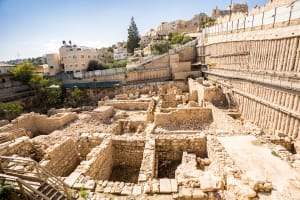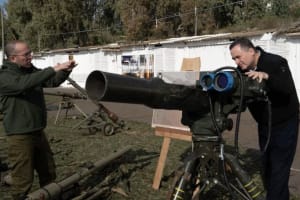2,300-year-old child's gold ring unearthed at City of David excavation in Jerusalem
These artifacts reveal Jerusalem's economic and social landscape in antiquity

In a remarkable discovery, a 2,300-year-old gold ring has been unearthed in the City of David, shedding new light on the lifestyle and sophistication of Jerusalem's inhabitants during the Hellenistic period.
This discovery took place during the joint excavation effort by the Israel Antiquities Authority (IAA) and Tel Aviv University, made possible with the support of the Elad Foundation. The excavation site, known as the Givati Parking Lot, is located within the Jerusalem Walls National Park.
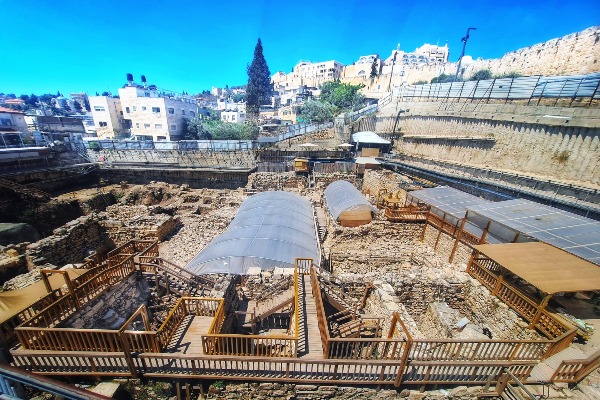
The ring, notable for its small diameter, suggests it was probably worn by a child, either a girl or a boy. This inference is supported by the excavation directors, Dr. Yiftah Shalev and Riki Zalut Har-Tov, who emphasized the ring's diminutive size, noting it would comfortably fit a woman's pinky or a child's finger.
Dr. Marion Zindel provided insights into the ring's craftsmanship, explaining it was made by hammering thin pre-cut gold leaves onto a metal base, a technique characteristic of the Persian and early Hellenistic periods. This period, dating from the late 4th to early 3rd century B.C.E, marked a shift towards preferring gold adorned with set stones rather than decorated gold.
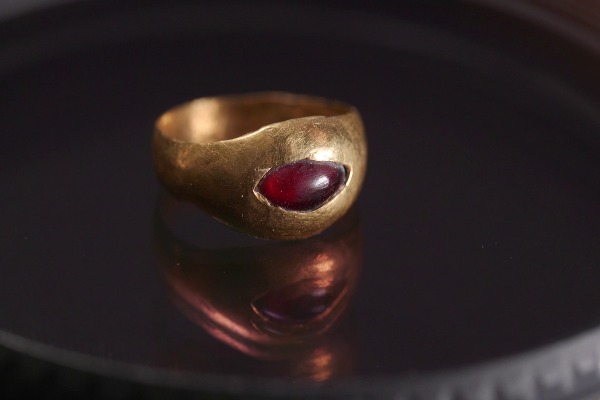
The gold ring, set with what appears to be a garnet stone, is exceptionally well-preserved. The natural resistance of Gold to corrosion has kept it intact, free from rust and the ravages of time.
This particular piece was discovered by Tehiya Gangate, a member of the excavation team. Recalling the moment, she said: "I was sifting earth through the screen and suddenly saw something glitter. I immediately yelled, ‘I found a ring, I found a ring!’ Within seconds everyone gathered around me, and there was great excitement. This is an emotionally moving find, not the kind you find every day. In truth, I always wanted to find gold jewelry, and I am very happy this dream came true, literally a week before I went on maternity leave."

The significance of this find extends beyond the ring itself. Prof. Yuval Gadot of Tel Aviv University and excavator Efrat Bocher highlighted that the discovery joins other Hellenistic period ornaments found in the City of David excavations, including a horned animal earring and a decorated gold bead.
These artifacts collectively contribute to a growing understanding of Jerusalem's economic and social status during this era. Contrary to the earlier belief that Jerusalem was a small, resource-limited town confined to the southeastern slope, new evidence suggests a more affluent and expansive city.
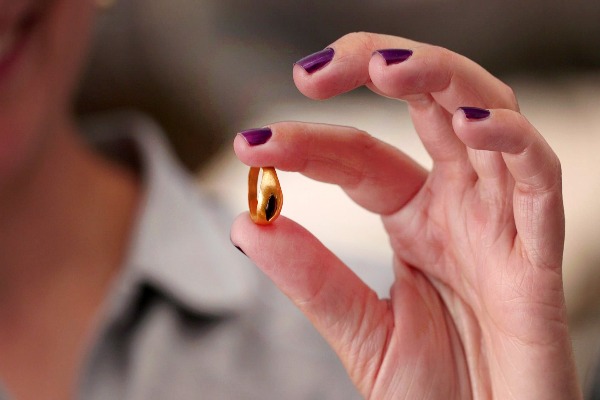
"The Givati Parking Lot excavation finds are beginning to paint a new picture of the nature and stature of Jerusalem’s inhabitants in the Early Hellenistic Period," noted Gadot and Bocher. They noted that the aggregate of revealed structures now constitutes an entire neighborhood, encompassing both domestic and public buildings. This indicates that the city extended westward from the hilltop and enjoyed a robust economy, open to Hellenistic influences prevalent in the eastern Mediterranean Basin.
Gold jewelry was a hallmark of the Hellenistic world, spurred by the conquests of Alexander the Great, which facilitated the spread of luxury goods and cultural motifs. The rich golden ornaments and jewelry of the Macedonian King's tombs found in northern Greece at Vergina several decades ago are a stunning testimony (among many others) to the wealth of the leaders and aristocratic people of this period. Often, these jewelry pieces featured designs inspired by the Greek art world, Greek mythological figures, or significant symbolic Hellenistic themes. This recently uncovered ring fits well within the context of Hellenistic artistry and craftsmanship.
In 2008, a hoard of 264 gold coins was uncovered by archaeologists Doron Ben-Ami and Yana Tchekhanovetsin at the same excavation dig lot. These coins date back to the early reign of Byzantine Emperor Heraclius, between 610 and 613 C.E., struck and hidden immediately before the Persian conquest of Jerusalem.

Another stunning finding took place in 2009 when digging in an 1800-year-old Roman building during the Givati Parking Lot excavation, the archaeologists found a beautiful gold earring inlaid with precious stones together with a marble figurine in the image of a boxer. The building was a mansion that belonged to a wealthy individual during the renewal period of Jerusalem under Roman rule and the rebuilding of the city by Emperor Hadrian, who renamed it by the name of Aelia-Capitolina around 132-135 A.D.
Eli Escusido, head of the IAA, emphasized the importance of such discoveries in understanding the past.
"The excavation in ancient Jerusalem reveals invaluable information to us about our past. In honor of Jerusalem Day, we are happy to invite the public to attend, free of charge, an evening dedicated to fascinating discoveries in Jerusalem."
This special ring, found recently, along with other finds, will be showcased to the public for the first time at the "Jerusalem Mysteries - The Archaeology of Jerusalem" conference. The event, hosted by the IAA, will be held on Jerusalem Day next week at the Jay and Jeanie Schottenstein National Campus for the Archaeology of Israel.
This free conference promises to provide attendees with a deeper understanding of Jerusalem's rich and complex history.
The discovery of this ancient gold ring in the City of David is a poignant reminder of Jerusalem's historical significance and the sophistication of its early residents. The ongoing excavations continue to reveal treasures that offer invaluable insights into the biblical city's past, helping us piece together the daily lives and cultural practices of those who once walked its streets.

The All Israel News Staff is a team of journalists in Israel.
You might also like to read this:


